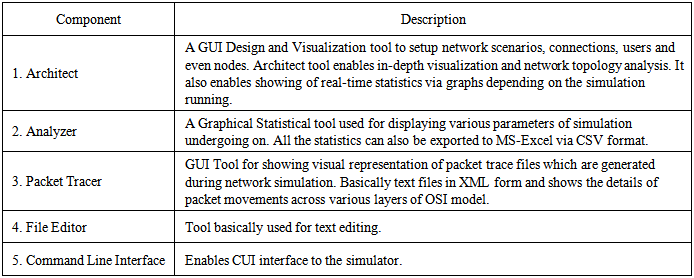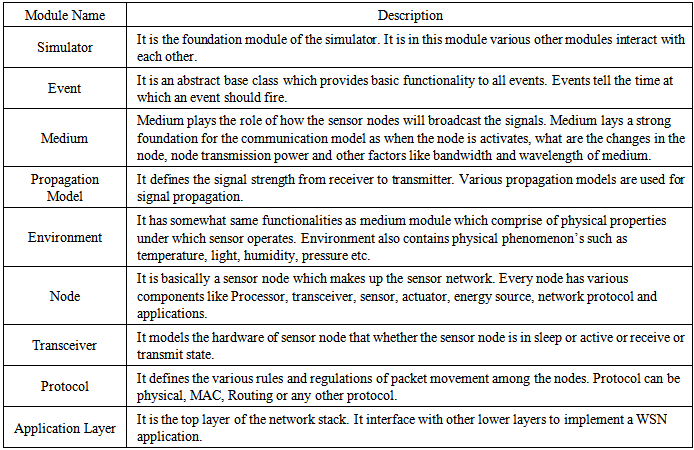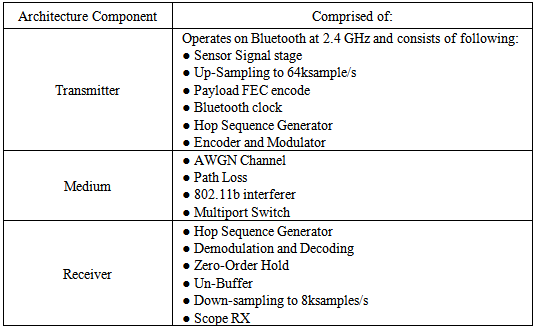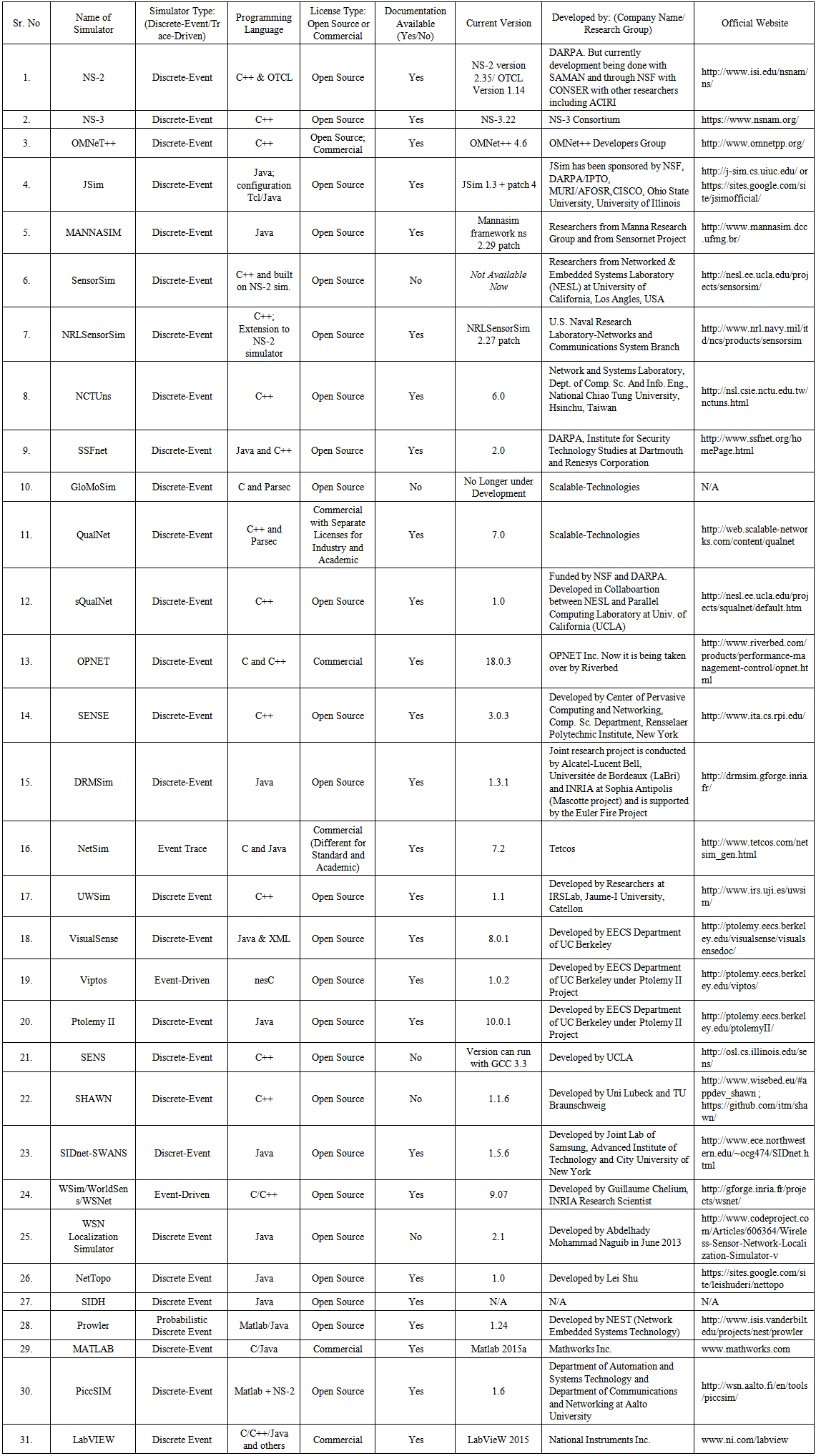| [1] | Akyildiz, I. F., Su, W., Sankarasubramaniam, Y., & Cayirci, E. (2002). Wireless sensor networks: a survey. Computer networks, 38(4), 393-422. |
| [2] | Yick, J., Mukherjee, B., & Ghosal, D. (2008). Wireless sensor network survey. Computer networks, 52(12), 2292-2330. |
| [3] | Imran, M., Said, A. M., & Hasbullah, H. (2010, June). A survey of simulators, emulators and testbeds for wireless sensor networks. In Information Technology (ITSim), 2010 International Symposium in (Vol. 2, pp. 897-902). IEEE. |
| [4] | Sundani, H., Li, H., Devabhaktuni, V. K., Alam, M., & Bhattacharya, P. (2011). Wireless sensor network simulators a survey and comparisons. International Journal of Computer Networks (IJCN), 2(5), 249-265. |
| [5] | Singh, C. P., Vyas, O. P., & Tiwari, M. K. (2008, December). A survey of simulation in sensor networks. In Computational Intelligence for Modelling Control & Automation, 2008 International Conference on (pp. 867-872). IEEE. |
| [6] | Egea-Lopez, E., Vales-Alonso, J., Martinez-Sala, A. S., Pavon-Marino, P., & García-Haro, J. (2005, July). Simulation tools for wireless sensor networks. InProceedings of the International Symposium on Performance Evaluation of Computer and Telecommunication Systems (SPECTS05) (p. 24). |
| [7] | Jain, R. (2008). The art of computer systems performance analysis. John Wiley & Sons. |
| [8] | Discrete Event Simulation: URL http://en.wikipedia.org/wiki/Discrete_event_simulation#Network_simulators”. Accessed on 17 August, 2014. |
| [9] | Jevtić, M., Zogović, N., & Dimić, G. (2009, November). Evaluation of wireless sensor network simulators. In Proceedings of the 17th Telecommunications Forum (TELFOR 2009), Belgrade, Serbia (pp. 1303-1306). |
| [10] | Mekni, M., & Moulin, B. (2008, August). A survey on sensor webs simulation tools. In Sensor Technologies and Applications, 2008. SENSORCOMM'08. Second International Conference on (pp. 574-579). IEEE. |
| [11] | Eriksson, J. (2009). Detailed simulation of heterogeneous wireless sensor networks. Department of Information Technology, Uppsala University. |
| [12] | Fall, K., & Varadhan, K. (2005). The ns Manual (formerly ns Notes and Documentation). The VINT project, 47. |
| [13] | The Network Simulator-ns2-Available from: http://www.isi.edu/nsnam/ns |
| [14] | Issariyakul, Teerawat, and Ekram Hossain. Introduction to network simulator NS2. Springer, 2011. |
| [15] | http://www.nsnam.org/docs/release/3.14/tutorial/singlehtml/index.html (Accessed on April 1, 2015) |
| [16] | http://www.omnetpp.org/ (Accessed on April 1, 2015) |
| [17] | Kellner, A., Behrends, K., & Hogrefe, D. (2010). Simulation environments for wireless sensor networks. no. June, 2. |
| [18] | https://castalia.forge.nicta.com.au/index.php/en/ (Accessed on April 2, 2015) |
| [19] | Boulis, A. (2009). Castalia User Manual. Online: http://castalia. npc. nicta. com. au/pdfs/Castalia-User Manual. pdf. |
| [20] | Varga, A., & Hornig, R. (2008, March). An overview of the OMNeT++ simulation environment. In Proceedings of the 1st international conference on Simulation tools and techniques for communications, networks and systems & workshops (p. 60). ICST (Institute for Computer Sciences, Social-Informatics and Telecommunications Engineering). |
| [21] | http://j-sim.cs.uiuc.edu/ (Accessed on April 1, 2015) |
| [22] | http://www.physiome.org/jsim/ (Accessed on April 1, 2015) |
| [23] | https://sites.google.com/site/jsimofficial/j-sim-tutorial (Accessed on April 1, 2015) |
| [24] | Sobeih, A., Chen, W. P., Hou, J. C., Kung, L. C., Li, N., Lim, H., ... & Zhang, H. (2005, April). J-sim: A simulation environment for wireless sensor networks. In Proceedings of the 38th annual Symposium on Simulation (pp. 175-187). IEEE Computer Society. |
| [25] | Sobeih, A., Viswanathan, M., Marinov, D., & Hou, J. C. (2007, March). J-Sim: An Integrated Environment for Simulation and Model Checking of Network Protocols. In IPDPS (pp. 1-6). |
| [26] | http://www.mannasim.dcc.ufmg.br/ (Accessed on April 1, 2015) |
| [27] | Musznicki, B., & Zwierzykowski, P. (2012). Survey of simulators for wireless sensor networks. International Journal of Grid and Distributed Computing, 5(3), 23-50. |
| [28] | Steyn, L. P., & Hancke, G. P. (2011, September). A survey of wireless sensor network testbeds. In AFRICON, 2011 (pp. 1-6). IEEE. |
| [29] | Park, S., Savvides, A., & Srivastava, M. B. (2000, August). SensorSim: A simulation framework for sensor networks. In Proceedings of the 3rd ACM international workshop on Modeling, analysis and simulation of wireless and mobile systems (pp. 104-111). ACM. |
| [30] | http://nesl.ee.ucla.edu/projects/sensorsim/ (Accessed on April 2, 2015) |
| [31] | http://www.nrl.navy.mil/itd/ncs/products/sensorsim (Accessed on April 2, 2015) |
| [32] | Donward, I. (2004). NRL’s sensor network extension to NS-2. Available on line at http://pf. itd. nrl. navy. mil/nrlsensorsim. |
| [33] | Jaichandran, R., & Irudhayaraj, A. A. (2010). A Futuristic Analysis on the Application Problems of Wireless Sensor Networks (WSN) with Effective Strategies and Optimal Solutions. International Journal of Computer Applications, 1(8), 10-16. |
| [34] | http://nsl.csie.nctu.edu.tw/nctuns.html (Accessed on April 2, 2015) |
| [35] | Wang, S. Y., & Huang, Y. M. (2012). NCTUns distributed network emulator. Internet Journal, 4(2), 61-94. |
| [36] | Wang, S. Y., & Huang, Y. M. (2009). NCTUns Tool for Innovative Network Emulations. Computer-Aided Design and Other Computing Research Developments. |
| [37] | Wang, S. Y., & Lin, C. C. (2010, May). NCTUns 6.0: a simulator for advanced wireless vehicular network research. In Vehicular Technology Conference (VTC 2010-Spring), 2010 IEEE 71st (pp. 1-2). IEEE. |
| [38] | Wang, S. Y., Chou, C. L., Lin, C. C., & Huang, C. H. (2010). The Protocol Developer Manual for the NCTUns 6.0 Network Simulator and Emulator. National Chiao Tung University, Tajwan. |
| [39] | Yoon, S., & Kim, Y. B. (2009, September). A design of network simulation environment using ssfnet. In Advances in System Simulation, 2009. SIMUL'09. First International Conference on (pp. 73-78). IEEE. |
| [40] | http://www.ssfnet.org/homePage.html (Accessed on April 2, 2015) |
| [41] | Cowie, J. H. (1999). Scalable simulation framework API reference manual. S3 Consortium, March. |
| [42] | Kabir, M. H., Islam, S., Hossain, M. J., & Hossain, S. Detail Comparison of Network Simulators. |
| [43] | Zeng, X., Bagrodia, R., & Gerla, M. (1998, May). GloMoSim: a library for parallel simulation of large-scale wireless networks. In Parallel and Distributed Simulation, 1998. PADS 98. Proceedings. Twelfth Workshop on (pp. 154-161). IEEE. |
| [44] | Bajaj, L., Takai, M., Ahuja, R., Tang, K., Bagrodia, R., & Gerla, M. (1999). Glomosim: A scalable network simulation environment. UCLA Computer Science Department Technical Report, 990027, 213. |
| [45] | GAO, Z. G., ZHAO, Y. L., LI, X., CAI, S. B., & WANG, C. S. (2006). Analysis of GloMoSim Wireless Network Simulator. Journal of System Simulation, S2. |
| [46] | Bagrodia, R., Meyer, R., Takai, M., Chen, Y. A., Zeng, X., Martin, J., & Song, H. Y. (1998). Parsec: A parallel simulation environment for complex systems.Computer, 31(10), 77-85. |
| [47] | http://web.scalable-networks.com/content/qualnet (Accessed on April 3, 2015) |
| [48] | http://web.scalable-networks.com/sites/default/files/PR131023-SCALABLE-Releases-QualNet-and-EXata-Upgrades.pdf (Accessed on April 3, 2015) |
| [49] | Vasu, B., Varshney, M., Rengaswamy, R., Marina, M., Dixit, A., Aghera, P., ... & Bagrodia, R. (2005, November). Squalnet: a scalable simulation framework for sensor networks. In Proceedings of the 3rd international conference on Embedded networked sensor systems (pp. 322-322). ACM. |
| [50] | Varshney, M., Xu, D., Srivastava, M., & Bagrodia, R. (2007, April). sQualNet: A scalable simulation and emulation environment for sensor networks. In Proceedings of the International Conference on Information Processing in Sensor Networks, New York, NY, USA. Citeseer (p. 24). |
| [51] | Varshney, M., Bagrodia, R., Dixit, A., Vasu, B., Aghera, P., & Srivastava, M. sQualNet version 1.0 beta: Tutorial and Programmers Manual. |
| [52] | http://nesl.ee.ucla.edu/projects/squalnet/ (Accessed on April 3, 2015) |
| [53] | Sethi, A. S., & Hnatyshin, V. Y. (2012). The Practical OPNET User Guide for Computer Network Simulation. CRC Press. |
| [54] | Lu, Z., & Yang, H. (2012). Unlocking the power of OPNET modeler. Cambridge University Press. |
| [55] | García-Hernando, A. B., Martínez-Ortega, J. F., López-Navarro, J. M., Prayati, A., & Redondo-López, L. (2008). Software Technologies in WSNs (pp. 1-49). Springer London. |
| [56] | Chang, X. (1999, December). Network simulations with OPNET. In Proceedings of the 31st conference on Winter simulation: Simulation---a bridge to the future-Volume 1 (pp. 307-314). ACM. |
| [57] | Katzela, I. (1998). Modeling and simulating communication networks: a hands-on approach using OPNET. Prentice Hall PTR. |
| [58] | http://www.opnet.com/university_program/itguru_academic_edition/ (Accessed on April 4, 2015) |
| [59] | http://www.riverbed.com/products/performance-management-control/opnet.html (Accessed on April 4, 2015) |
| [60] | https://support.riverbed.com/bin/support/static//doc/opnet/OnlineHTML/Modeler/modeler_17.5_PL6/ wwhelp/wwhimpl/js/html/wwhelp.htm (Accessed on April 4, 2015) |
| [61] | Chen, G., Branch, J., Pflug, M., Zhu, L., & Szymanski, B. (2005). SENSE: a wireless sensor network simulator. In Advances in pervasive computing and networking (pp. 249-267). Springer US. |
| [62] | Szymanski, B. K., & Chen, G. G. (2007). Sensor network component based simulator. Handbook of Dynamic System Modeling, 35, 1-16. |
| [63] | http://www.ita.cs.rpi.edu/ (Accessed on April 4, 2015) |
| [64] | Rosa, P. M., Neves, P. A., Vaidya, B., & Rodrigues, J. J. (2009, September). G-Sense-A Graphical Interface for SENSE Simulator. In Advances in System Simulation, 2009. SIMUL'09. First International Conference on (pp. 88-93). IEEE. |
| [65] | http://netgna.it.ubi.pt/Downloads/G-SENSE.php (Accessed on April 4, 2015) |
| [66] | http://drmsim.gforge.inria.fr/index.php?page=intro (Accessed on April 4, 2015) |
| [67] | Hogie, L., Tahiri, I., Papadimitriou, D., & Majorczyk, F. (2010). DRMSim: a network simulator for the investigation of routing schemes User manual. |
| [68] | Lancin, A., & Papadimitriou, D. (2013). DRMSim: A Routing-Model Simulator for Large-Scale Networks. ERCIM News, 94, 31-32. |
| [69] | Hogie, L., Papadimitriou, D., Tahiri, I., & Majorczyk, F. (2010, May). Simulating routing schemes on large-scale topologies. In Principles of Advanced and Distributed Simulation (PADS), 2010 IEEE Workshop on (pp. 1-10). IEEE. |
| [70] | Chéour, R., Jmal, M. W., Lay-Ekuakille, A., Derbel, F., Kanoun, O., & Abid, M. (2013, October). Choice of efficient simulator tool for wireless sensor networks. In Measurements and Networking Proceedings (M&N), 2013 IEEE International Workshop on (pp. 210-213). IEEE. |
| [71] | Redondo-López, L., Prayati, A., López-Navarro, J. M., Martínez-Ortega, J. F., & García-Hernando, A. B. (2008). Problem Solving for Wireless Sensor Networks. Problem Solving for Wireless Sensor Networks:, Computer Communications and Networks. ISBN 978-1-84800-203-6. Springer-Verlag London, 2008, 1. |
| [72] | NetSim 8 User Manual: Available at: http://www.boson.com/files/support/NetSim-8-User-Manual.pdf (Accessed on April 4, 2015) |
| [73] | http://www.tetcos.com/netsim_gen.html (Accessed on April 4, 2015) |
| [74] | Dhurandher, S. K., Misra, S., Obaidat, M. S., & Khairwal, S. (2008). UWSim: A simulator for underwater sensor networks. Simulation, 84(7), 327-338. |
| [75] | Prats, M., Pérez, J., Fernández, J. J., & Sanz, P. J. (2012, October). An open source tool for simulation and supervision of underwater intervention missions. In Intelligent Robots and Systems (IROS), 2012 IEEE/RSJ International Conference on (pp. 2577-2582). IEEE. |
| [76] | Dhviya, V. P., & Arthi, R. Analysis of Simulation Tools for Underwater Wireless Sensor Networks. |
| [77] | http://www.irs.uji.es/uwsim/ (Accessed on April 4, 2015) |
| [78] | Kohli, S., Lee, E. A., Liu, X., Zhao, Y., Ee, C. T., Brooks, C., ... & Zhou, R. (2005). Visualsense: Visual modeling for wireless and sensor network systems. |
| [79] | http://ptolemy.eecs.berkeley.edu/visualsense/ (Accessed on April 4, 2015) |
| [80] | Cheong, E., Lee, E. A., & Zhao, Y. (2005, November). Viptos: a graphical development and simulation environment for tinyos-based wireless sensor networks. In SenSys (Vol. 5, pp. 302-302). |
| [81] | Teng, G., Zheng, K., & Dong, W. (2008, October). A survey of available tools for developing wireless sensor networks. In Systems and Networks Communications, 2008. ICSNC'08. 3rd International Conference on (pp. 139-144). IEEE. |
| [82] | http://ptolemy.eecs.berkeley.edu/viptos/ (Accessed on April 4, 2015) |
| [83] | Cheong, E., Lee, E. A., & Zhao, Y. (2006). Joint modeling and design of wireless networks and sensor node software. EECS Department, University of California, Berkeley, UCB/EECS-2006-150. |
| [84] | http://ptolemy.eecs.berkeley.edu/ptolemyII/ (Accessed on April 4, 2015) |
| [85] | Sundresh, S., Kim, W., & Agha, G. (2004, April). SENS: A sensor, environment and network simulator. In Proceedings of the 37th annual symposium on Simulation (p. 221). IEEE Computer Society. |
| [86] | http://osl.cs.illinois.edu/sens (Accessed on April 4, 2015) |
| [87] | Peterson, J. A. (2005). SENS: A simple, extensible sensor network simulator for exploring approximate aggregation techniques. Master's thesis, Boston University. |
| [88] | Kröller, A., Pfisterer, D., Buschmann, C., Fekete, S. P., & Fischer, S. (2005). Shawn: A new approach to simulating wireless sensor networks. arXiv preprint cs/0502003. |
| [89] | http://www.wisebed.eu/#appdev_shawn (Accessed on April 4, 2015) |
| [90] | Fekete, S. P., Kröller, A., Fischer, S., & Pfisterer, D. (2007, June). Shawn: The fast, highly customizable sensor network simulator. In Proceedings of the Fourth International Conference on Networked Sensing Systems (INSS 2007)(Vol. 32). |
| [91] | http://www.ece.northwestern.edu/~ocg474/SIDnet.html (Accessed on April 4, 2015) |
| [92] | Ghica, O. C., Trajcevski, G., Scheuermann, P., Bischof, Z., & Valtchanov, N. (2008, November). Sidnet-swans: A simulator and integrated development platform for sensor networks applications. In Proceedings of the 6th ACM conference on Embedded network sensor systems (pp. 385-386). ACM. |
| [93] | Pathan, A. S. K., Monowar, M. M., & Khan, S. (Eds.). (2014). Simulation Technologies in Networking and Communications: Selecting the Best Tool for the Test. CRC Press. |
| [94] | Ghica, O. C. (2010). SIDnet-SWANS manual. |
| [95] | http://perso.ens-lyon.fr/eric.fleury/Upload/wsim-docbook/tools.html#id4743825 (Accessed on April 5, 2015) |
| [96] | http://wsim.gforge.inria.fr/overview.html (Accessed on April 5, 2015) |
| [97] | Fraboulet, A., Chelius, G., & Fleury, E. (2007, April). Worldsens: development and prototyping tools for application specific wireless sensors networks. In Information Processing in Sensor Networks, 2007. IPSN 2007. 6th International Symposium on (pp. 176-185). IEEE. |
| [98] | Chelius, G., Fraboulet, A., & Fleury, E. (2007, March). Worldsens: a fast and accurate development framework for sensor network applications. In Proceedings of the 2007 ACM symposium on Applied computing (pp. 222-226). ACM. |
| [99] | http://www.codeproject.com/Articles/606364/Wireless-Sensor-Network-Localization-Simulator-v (Accessed on April 5, 2015) |
| [100] | Shu, L., Wu, C., Zhang, Y., Chen, J., Wang, L., & Hauswirth, M. (2008). NetTopo: beyond simulator and visualizer for wireless sensor networks. ACM SIGBED Review, 5(3), 2. |
| [101] | Shu, L., Hauswirth, M., Chao, H. C., Chen, M., & Zhang, Y. (2011). NetTopo: A framework of simulation and visualization for wireless sensor networks. Ad Hoc Networks, 9(5), 799-820. |
| [102] | Shu, L., Wu, C., & Hauswirth, M. NetTopo: a framework of simulation and visualization for wireless sensor networks, Digital Enterprise Research Institute (DERI), National University of Ireland. Galway, Technical Report, October 30, 2008. Available at: http://library. deri. ie/resource/jbug5jlj. |
| [103] | Shu, L., Hauswirth, M., Wang, L., Yuan, Z., & Chen, Y. (2009, September). Visualizing simulation and testbed of wireless sensor networks with NetTopo. In Proceedings of the 4th ACM international workshop on Experimental evaluation and characterization (pp. 99-100). ACM. |
| [104] | Parbat, B., Dwivedi, A. K., & Vyas, O. P. (2010). Data visualization tools for WSNs: a glimpse. International Journal of Computer Applications, 2(1), 14-20. |
| [105] | https://sites.google.com/site/leishuderi/nettopo (Accessed on April 5, 2015) |
| [106] | Carley, T. W. (2005). Sidh: A wireless sensor network simulator. |
| [107] | Simon, G., Volgyesi, P., Maróti, M., & Lédeczi, Á. (2003, March). Simulation-based optimization of communication protocols for large-scale wireless sensor networks. In IEEE aerospace conference (Vol. 3). |
| [108] | Simon, G. (2003). Prowler: Probabilistic wireless network simulator. Institute for Software Integrated Systems, Nashville. |
| [109] | http://www.isis.vanderbilt.edu/projects/nest/prowler/ (Accessed on April 5, 2015) |
| [110] | Simek, M., Moravek, P., & sa Silva, J. (2011). Wireless Sensor Networking in Matlab: Step-by-Step. In proceedings of International Conference on Teleinformatics (pp. 185-190). |
| [111] | Ali, Q. I. (2012). Simulation Framework of Wireless Sensor Network (WSN) Using MATLAB/SIMULINK Software. Edited by Vasilios N. Katsikis, 263. |
| [112] | Ali, Q. I., Abdulmaowjod, A., & Mohammed, H. M. (2010, November). Simulation & performance study of wireless sensor network (WSN) using MATLAB. In Energy, Power and Control (EPC-IQ), 2010 1st International Conference on (pp. 307-314). IEEE. |
| [113] | Matlab website: www.mathworks.com |
| [114] | http://wislab.cz/our-work/wireless-sensor-network-simulation-tutorial-for-matlab (Accessed on April 5, 2015) |
| [115] | Kohtamaki, T., Pohjola, M., Brand, J., & Eriksson, L. M. (2009, March). Piccsim toolchain-design, simulation and automatic implementation of wireless networked control systems. In Networking, Sensing and Control, 2009. ICNSC'09. International Conference on (pp. 49-54). IEEE. |
| [116] | http://wsn.aalto.fi/en/tools/piccsim/ (Accessed on April 5, 2015) |
| [117] | PiccSim Manual: Available athttp://wsn.aalto.fi/en/tools/piccsim/piccsim_manual_1.1.pdf (Accessed on April 15, 2015) |
| [118] | Labview Website: www.ni.com/labview (Accessed on April 5, 2015) |
| [119] | http://www.ni.com/white-paper/8981/en/ (Accessed on April 5, 2015) |
| [120] | http://www.ni.com/labview/wsn/ (Accessed on April 5, 2015) |
| [121] | http://en.wikipedia.org/wiki/LabVIEW (Accessed on April 6, 2015) |
| [122] | Nayyar, A., & Gupta, A. (2014). A Comprehensive Review of Cluster-Based Energy Efficient Routing Protocols in Wireless Sensor Networks. IJRCCT, 3(1), 104-110. |
| [123] | Nayyar, A., & Sharma, S. (2014). A Survey on Coverage and Connectivity Issues Surrounding Wireless Sensor Network. IJRCCT, 3(1), 111-118. |
| [124] | Nayyar, A. (2012, January). Simulation Based Evaluation of Reactive Routing Protocol for MANET. In Advanced Computing & Communication Technologies (ACCT), 2012 Second International Conference on (pp. 561-568). IEEE. |
| [125] | Nayyar, A., & Singh, R. (2014). A Comprehensive Review of Ant Colony Optimization (ACO) based Energy-Efficient Routing Protocols for Wireless Sensor Networks. International Journal of Wireless Networks and Broadband Technologies (IJWNBT), 3(3), 33-55. |




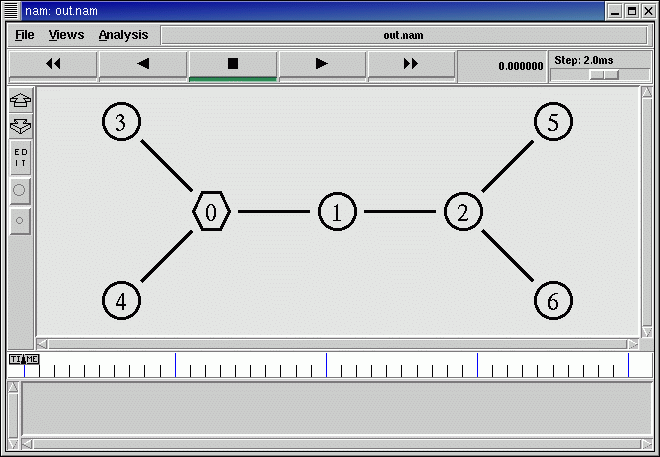
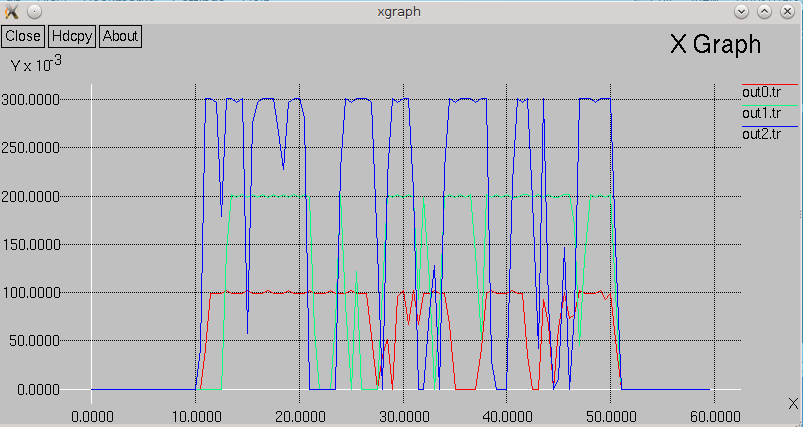


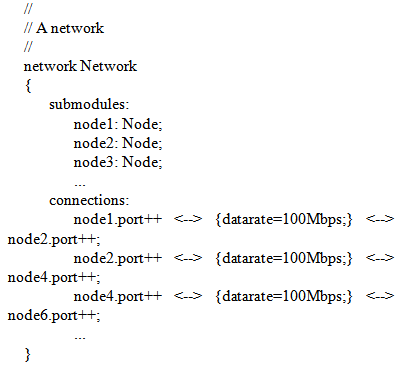 NED Code for Topology DescriptionThe Simulator which is built primarily for Wireless Sensor Network in OMNeT++ is CASTALIA.CASTALIA [18] [19]Castalia, a popular Wireless Sensor Network, Body Area Networks (BAN) simulator which is made especially for low power embedded devices. The simulator is primarily being used by researchers to simulate algorithms and protocols in real time wireless channels and radio models and to see the real time node results and study interpretations. Castalia is not regarded as sensor specific platform rather it was developed to provide real time results of the algorithm being developed by the researcher on any specific sensor platform. The latest version of Castalia is 3.2 which was released in March 2011. Castalia provides the following:● Channel Model to study mobility of nodes, study the path between the nodes and any interference level with regard to signal strength.● Radio Model to interpret SINR, packet size, module type and carrier sensing.● MAC and Routing Protocols study on nodes.● Monitoring CPU power consumption.
NED Code for Topology DescriptionThe Simulator which is built primarily for Wireless Sensor Network in OMNeT++ is CASTALIA.CASTALIA [18] [19]Castalia, a popular Wireless Sensor Network, Body Area Networks (BAN) simulator which is made especially for low power embedded devices. The simulator is primarily being used by researchers to simulate algorithms and protocols in real time wireless channels and radio models and to see the real time node results and study interpretations. Castalia is not regarded as sensor specific platform rather it was developed to provide real time results of the algorithm being developed by the researcher on any specific sensor platform. The latest version of Castalia is 3.2 which was released in March 2011. Castalia provides the following:● Channel Model to study mobility of nodes, study the path between the nodes and any interference level with regard to signal strength.● Radio Model to interpret SINR, packet size, module type and carrier sensing.● MAC and Routing Protocols study on nodes.● Monitoring CPU power consumption.

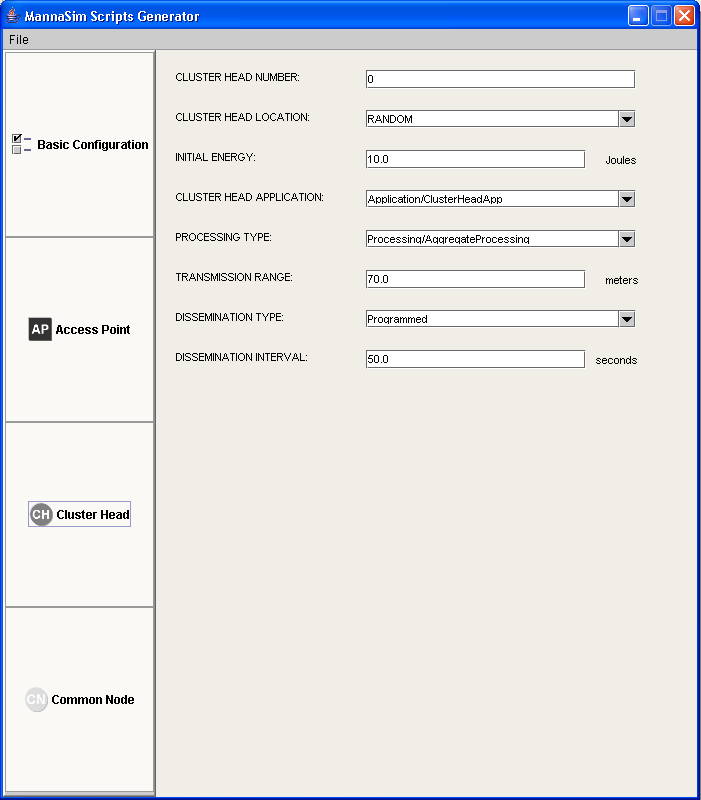


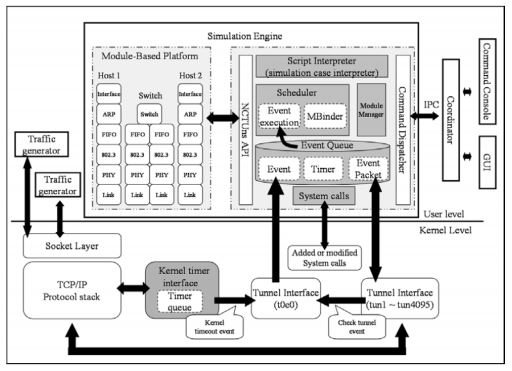
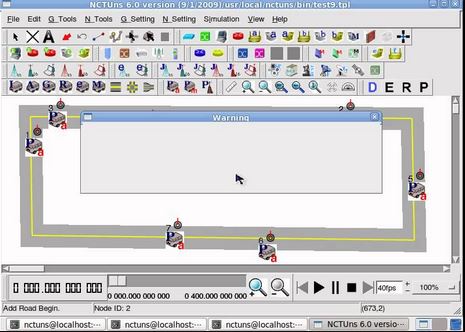



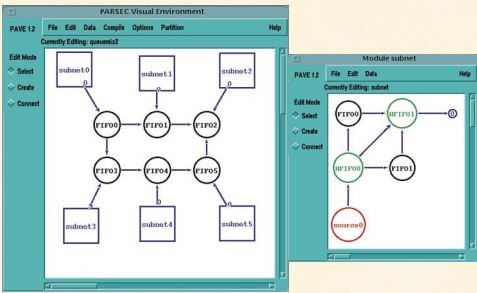

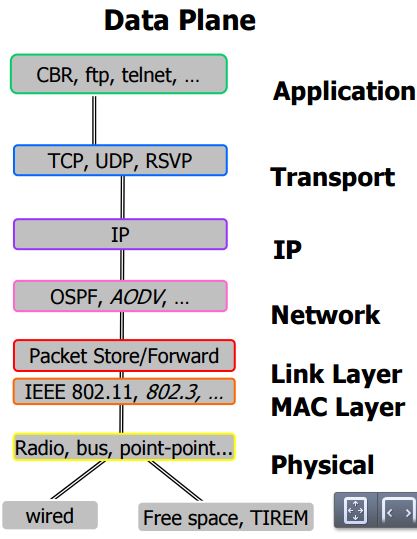
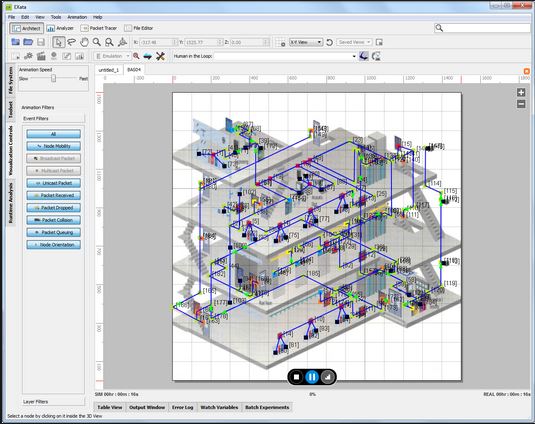


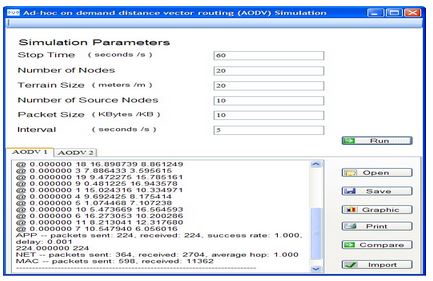
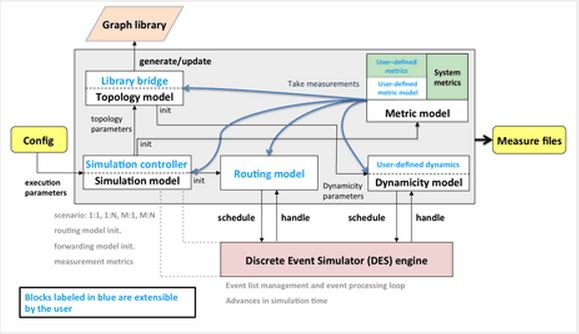
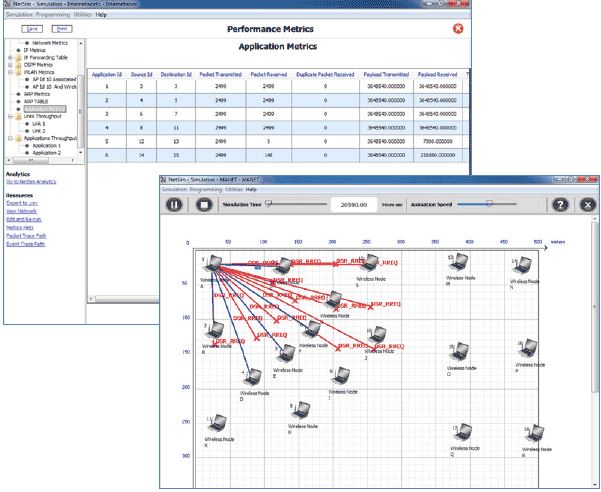
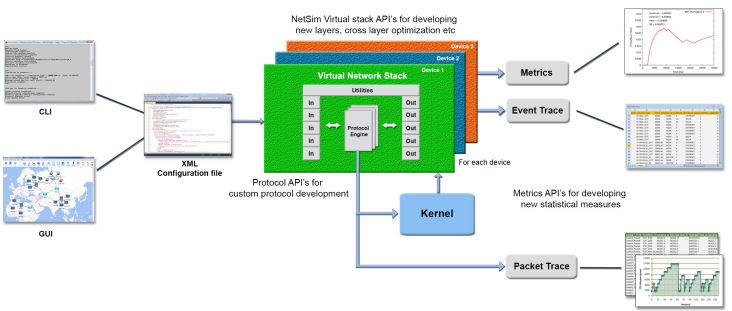
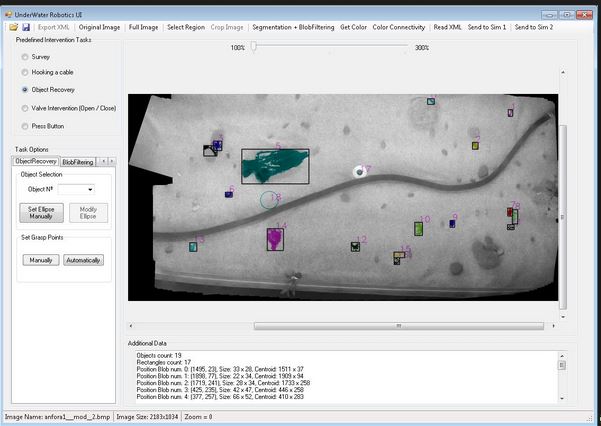
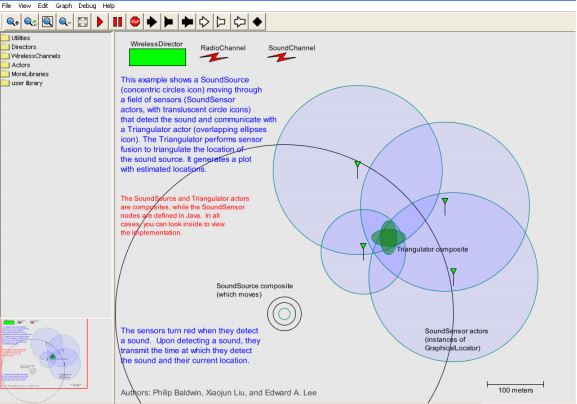

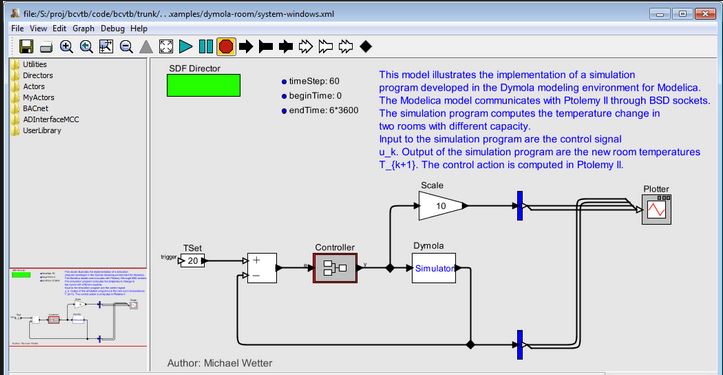
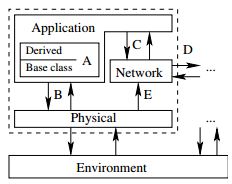

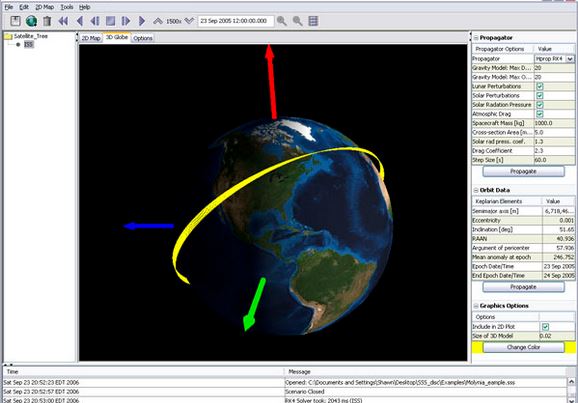

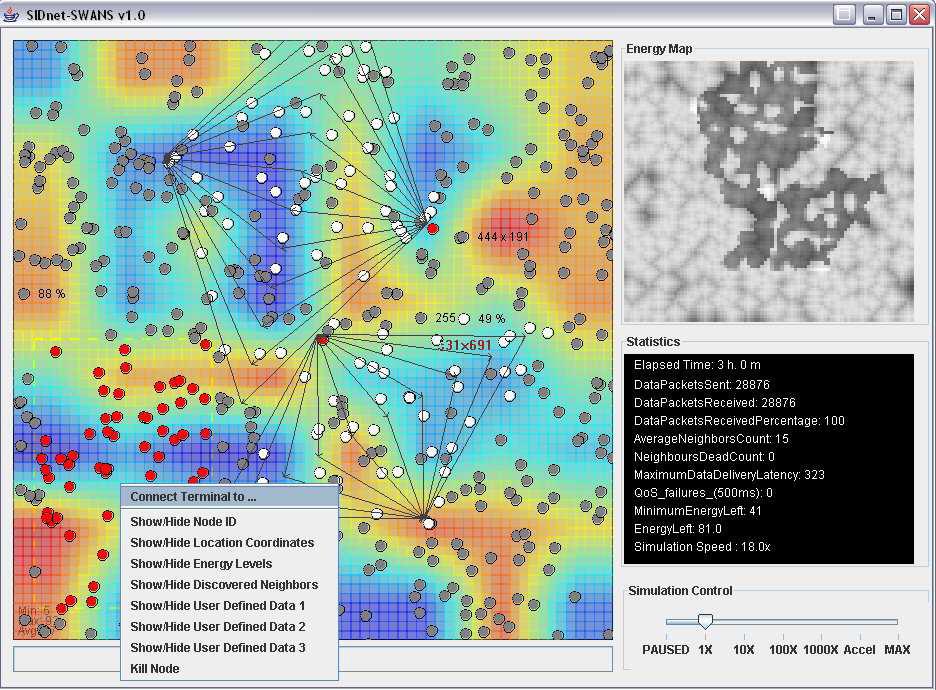












 Abstract
Abstract Reference
Reference Full-Text PDF
Full-Text PDF Full-text HTML
Full-text HTML
